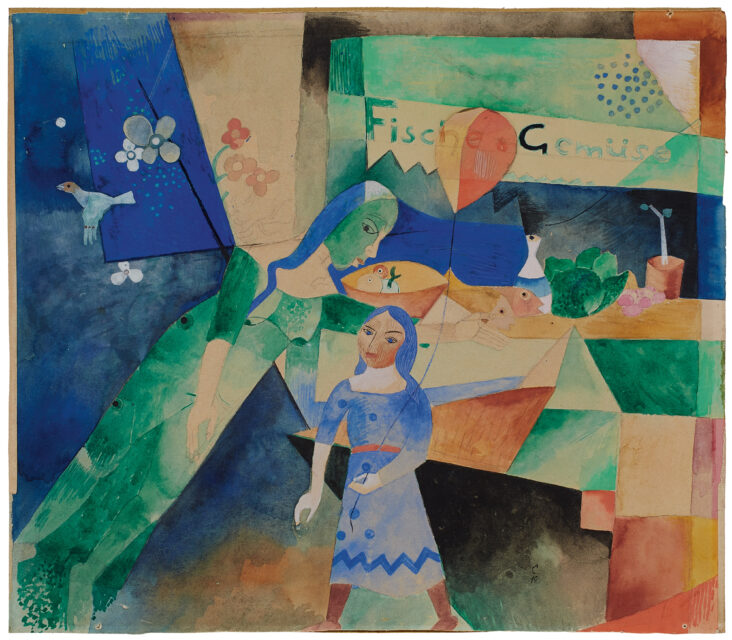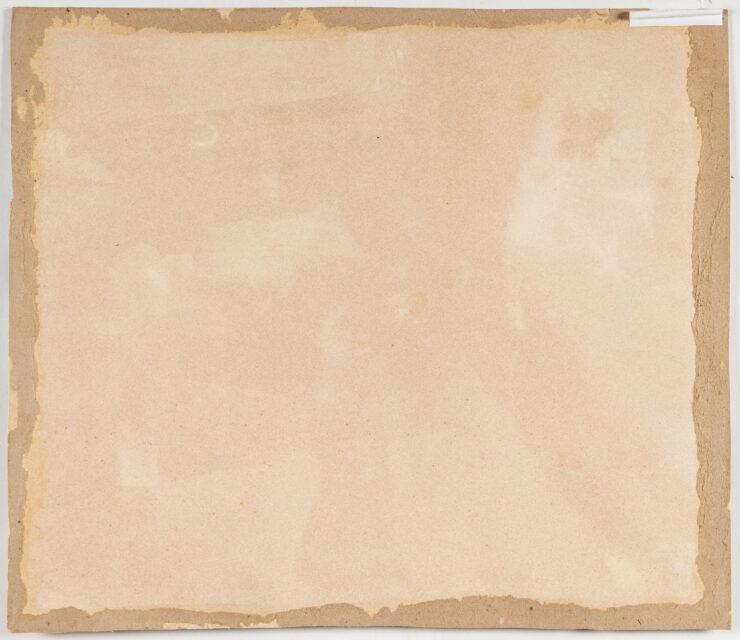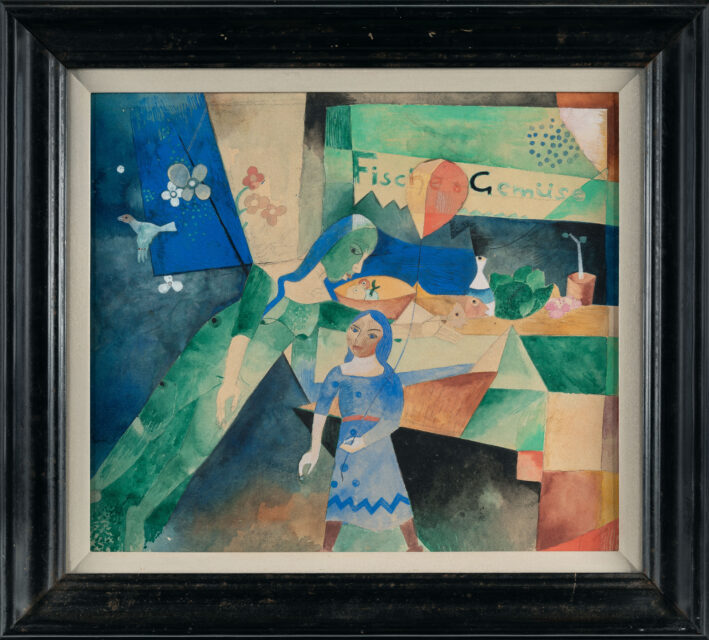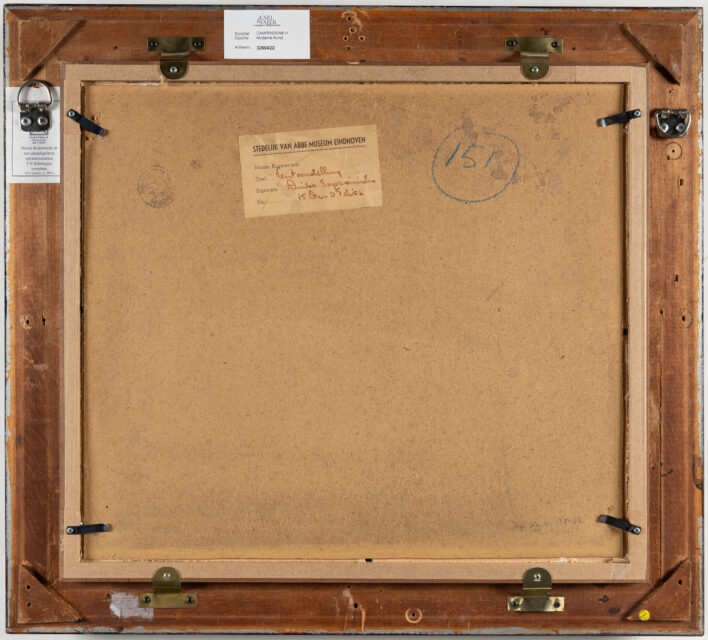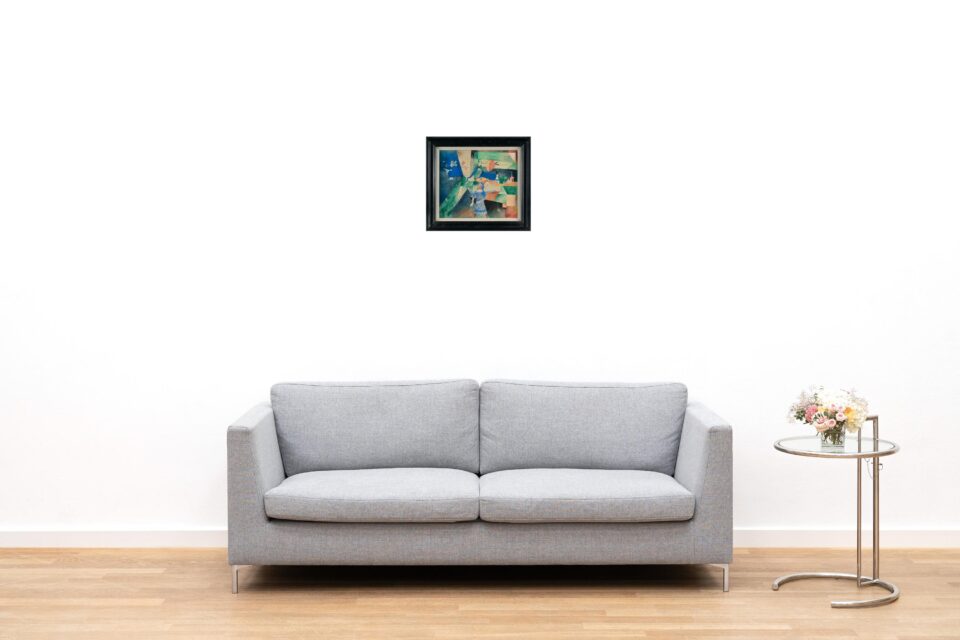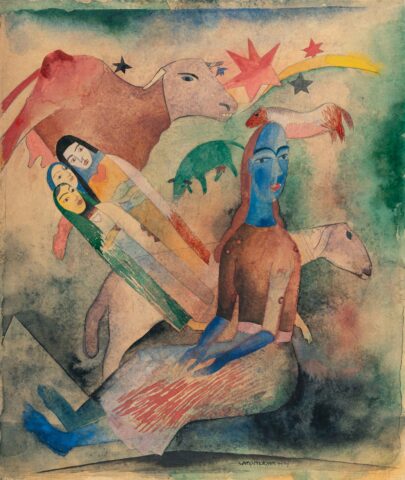
The shop window
Details
Firmenich 812 A.
Literature:
Biermann, Georg, Heinrich Campendonk, in: Der Cicerone. Semi-monthly magazine for artists, art lovers and collectors, XII. Jahrgang, 1920, vol. 18, p. 670, with b/w illus.
Exhibition:
Heinrich Campendonk. Josef Eberz, Galerie Flechtheim, Düsseldorf 1920, cat. no. 48, no illus;
Expressionisme: werken uit de verzameling Haubrich in het Wallraf Richartz Museum te Keulen, Stedelijk van Abbemuseum, Eindhoven 1951/52, probably cat. no. 25 (“compositie”), no illus., on the reverse of the frame backing with the exhibition label;
simple. magical. The pictorial worlds of Heinrich Campendonk, Museum Penzberg – Campendonk Collection, Penzberg 2018, special exhib. o. cat.
Provenance:
Collection Dr Josef Haubrich, Cologne, acquired directly from the artist, since then in family possession;
Lempertz, Cologne 26/11/2013, lot 308;
Private collection, Switzerland.
Descrizione
– Characteristic work by Heinrich Campendonk with expressive and at the same time harmoniously balanced colours
– One of Campendonk’s few motifs that thematises the reality of modern life
– The watercolour was exhibited at the Flechtheim Gallery in Düsseldorf as early as 1920 and illustrated in the art magazine Cicerone
In the spring of 1916, Heinrich Campendonk moved with his family from Sindelsdorf to Seeshaupt, a small village at the southern tip of Lake Starnberg. The shop depicted by Campendonk in 1919, which sells fish and vegetables, sells the local produce. There must not have been much else on offer there at the time, as the poor supply situation and, above all, the inflation did not stop after the war.
On the right-hand side of the picture, the window display shows a small still life that appears sparse due to the juxtaposition: a bowl of vegetables or fruit, fish, a carafe, a head of lettuce or cabbage, berries or cherries and a plant in a pot. In the centre of the picture in front of it is a girl in a blue dress and blue hair, holding a yellow and red balloon on a string, the semi-transparent material of which allows the letters of the inscription behind it to show through above the window. This figure has a twin figure in Campendonk’s work in the painting “Child with Balloon”, also painted in 1919 (cf. WVZ Firmenich 777, today Fondazione Gabriele e Anna Braglia, Lugano).
The girl in front of the shop window looks at the viewer with wide eyes. Next to her, a green female figure protrudes diagonally into the picture from the left-hand corner, appearing to float; at least her feet are not touching the ground. The eye in the head shown to the side is also directed at the viewer. Is this figure a mermaid emerging from the seawater? She gestures towards the frugal gifts of water and soil in the display window; she can be understood as an elemental spirit, even as a nurturing mother figure. A mysterious composition that is completed by the flying white bird on a blue background and the stylised flowers.
The composition on the right-hand side of the picture around the shop window, with its reflections and reflexes, is really exciting and is reminiscent of August Macke’s Tunis watercolours: stacked and interlaced triangles and rectangles at the bottom and, above the window displays, the bright blue reflections of the lake reflected in the window and the surrounding mountains. This blue is repeated in the shadow of a sun sail on the left-hand side of the picture, from which the small bird appears to be flying out into the wide, slightly broken blue of the natural landscape. The composition intensifies towards the centre of the picture: the light-coloured awning comes from above and is continued in the female figure’s décolleté, while the two dark triangular shapes, which dissolve into coloured edges, come from below. The nested reflections are added from the right. The two figures also converge there. Now it is noticeable how the light green female body is placed over the dark blue surface, thereby spatialising the composition.
In this work, too, a distinction is made between carefully painted figures and forms on the one hand and a cloudy wet-on-wet technique for backgrounds, and the effect is worked on using complementary colours. The basic contrast, however, is formed by the two cold colours blue and green. Ochre and red tones as well as – very sparingly used – yellow and pink make the colour tone radiant. Gisela Geiger
* Tutte le informazioni includono la commissione a carico dell'acquirente (27%) senza IVA e senza garanzia. Salvo errori.
** Tutte le informazioni più la commissione a carico dell'acquirente e l'IVA e senza garanzia. Salvo errori.
*** Con riserva: L'offerta è stata accettata al di sotto del limite. L'acquisizione dell'opera potrebbe essere ancora possibile nella nostra vendita post-asta.
R = Le opere d'arte regolarmente tassate
N = Opere d'arte soggette a tassazione differenziata e provenienti da un paese non UE
Non è consentita la riproduzione e la distribuzione privata o commerciale di tutte le illustrazioni delle opere esposte nell'archivio della mostra e dell'asta. Tutti i diritti riservati.


